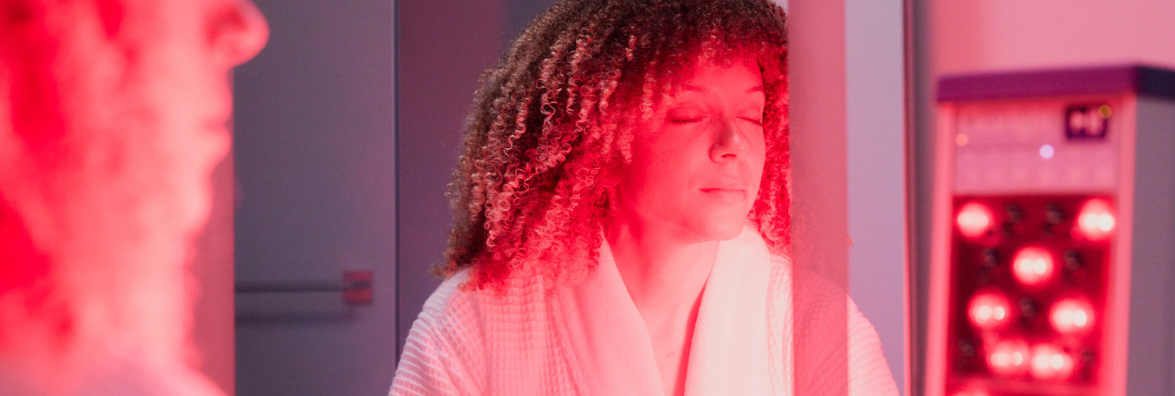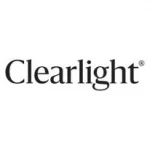- 07 Jul, 2025
- /
- Clearlight Infrared Saunas
- /
- No Comments
The Benefits of Red Light Therapy for Dermatologists
Red light therapy (RLT) has become an increasingly valuable tool in dermatology practices, thanks to its evidence-based applications in improving skin health, accelerating recovery, and enhancing client satisfaction. Non-invasive and generally well-tolerated, RLT may support a wide variety of dermatological treatments with minimal risk and downtime. As dermatologists seek to offer comprehensive, modern solutions, red light therapy can elevate both patient outcomes and practice visibility.
Understanding Red Light Therapy in Dermatology
Red light therapy involves exposing the skin to low-level red and near-infrared light, typically in the 650–850 nm range. This light penetrates the skin to varying depths, potentially influencing cellular function. The primary mechanism is believed to be the stimulation of mitochondria, leading to increased production of adenosine triphosphate (ATP), which may enhance cellular repair and regeneration.
Studies have explored RLT’s effects on various skin conditions, such as collagen production, reduction of inflammation, and improvement in skin texture. However, it is essential to note that while promising, RLT is not a cure-all and should be considered as part of a comprehensive dermatologic treatment plan.
Advantages of Red Light Therapy for Dermatology Practices
Red light therapy provides strategic benefits for dermatology practices. It’s a value-added service that meets growing demand for holistic, tech-enabled skin solutions.
Improved Patient Satisfaction
RLT is painless, has no known downtime, and shows visible results over time, especially when combined with traditional dermatological treatments. Because of this, patients will have a more positive dermatologic treatment experience, boosting patient satisfaction scores.
Differentiation in a Competitive Market
Offering red light therapy allows practices to promote advanced, non-invasive skin treatments that set them apart. Especially as patients become more informed and seek integrative care, showcasing RLT on a treatment menu can attract clientele interested in modern, science-based wellness.
Low Operational Risk
Because red light therapy does not involve tissue damage, the risk of adverse events is extremely low. Red light therapy devices are easy to operate and can be administered by trained technicians, freeing up physicians for more complex consultations.
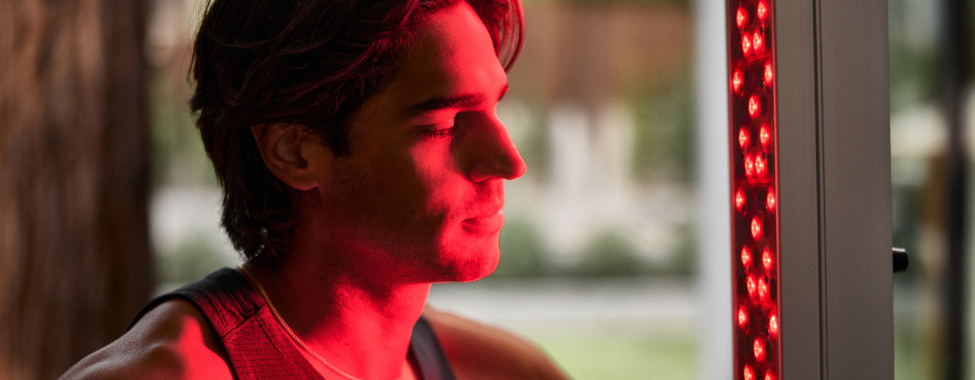
How Red Light Therapy Supports Skin Health
Red light therapy offers dermatologists a clinically supported way to enhance overall skin quality and address many of the most common cosmetic concerns patients present with, including fine lines and wrinkles, dark spots, uneven skin texture, and loose skin. Through its impact on cellular metabolism, circulation, and collagen formation, RLT supports the skin’s natural ability to renew and repair.
Given its broad spectrum of benefits, RLT is well-suited for use alongside many dermatological interventions. Whether your patient is recovering from an ablative procedure or seeking long-term improvements in photoaged or blemish-prone skin, red light therapy offers a low-risk, evidence-informed way to accelerate healing and enhance visible results.
Collagen Production
Red light can help increase collagen synthesis by stimulating fibroblast activity and improving the structure of the extracellular matrix. This collagen boost plays a significant role in improving skin firmness and elasticity, which can help reduce the appearance of loose skin and sagging in aging patients.
Increased collagen and elastin production also improves the appearance of fine lines and wrinkles, especially in high-mobility areas like the forehead, around the eyes, and near the mouth. Patients undergoing regular RLT sessions often report firmer, plumper skin as well as improved tone and texture.
Reduced Inflammation
Research has shown that red light therapy can be a useful tool in reducing inflammation. Inflammatory skin conditions such as acne, rosacea, and eczema often show measurable improvement with RLT due to its modulation of cytokine activity and reduction in oxidative stress.
This anti-inflammatory effect can also help reduce post-inflammatory hyperpigmentation and dark spots left behind by acne or sun damage. By reducing inflammation at the source, RLT may support more even skin tone and prevent future flare-ups that contribute to pigment irregularities.
Improved Circulation and Healing
Red light therapy enhances microcirculation by increasing capillary activity and boosting the transport of oxygen and nutrients. This process supports both acute healing (such as after dermatological procedures) and long-term skin rejuvenation by helping to detoxify tissue, encourage turnover, and repair damage from UV exposure or toxins.
Improved circulation can also contribute to more radiant, smoother skin by encouraging faster cellular renewal and reducing uneven texture. This makes RLT a powerful adjunct to in-office procedures such as chemical peels, microneedling, and laser resurfacing, helping patients see quicker, more consistent results with less downtime.
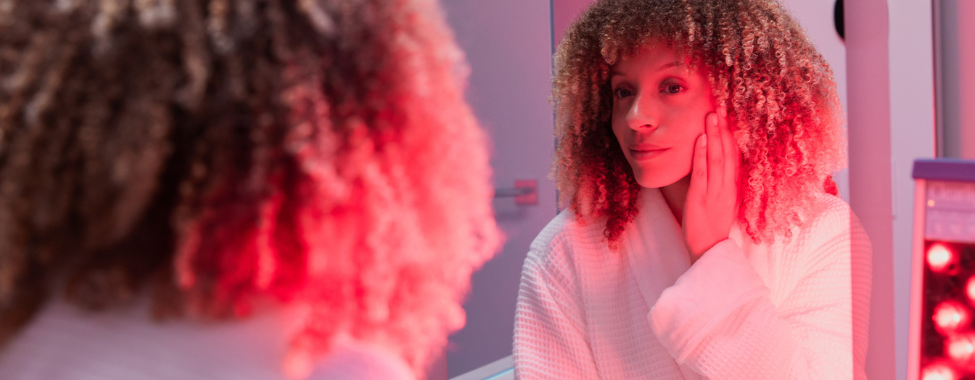
RLT in Post-Treatment Recovery and Wound Healing
Post-procedural care is crucial in dermatology to ensure optimal healing, reduce patient downtime, and support satisfaction. Red light therapy (RLT), through its ability to modulate inflammation, promote tissue regeneration, and enhance circulation, may serve as a low-risk, supportive tool during the healing phase after common dermatologic procedures.
Red light therapy has been shown to accelerate wound healing and reduce post-surgical complications like edema and bruising. A 2022 study found that near-infrared light enhanced healing in patients recovering from surgery and post-surgical scarring. Another study demonstrated that photobiomodulation using RLT promoted faster healing and improved cosmetic outcomes after procedures such as rhinoplasty and blepharoplasty.
A recent 2024 study evaluating photobiomodulation in facial dermatology procedures reinforced the clinical value of red light therapy as a post-treatment recovery tool. The findings highlighted several specific benefits across both surgical and non-surgical contexts, underscoring its potential to enhance patient outcomes and satisfaction:
- Pain Management: Decreased pain scores, faster resolution of discomfort
- Swelling Reduction: Faster reduction in swelling and improved recovery times
- Wound Healing: Accelerated epithelialization and tissue regeneration
- Scar Quality: Improved scar aesthetics, reduced fibrotic tissue
- Comparative Effectiveness: Enhanced outcomes in both surgical and non-surgical contexts
Clinical Applications for Acne, Rosacea, and Photoaging
Red light therapy is particularly effective in addressing three of the most common patient concerns in dermatology clinics: acne, rosacea, and photoaging.
Acne Vulgaris
Red light can help decrease Propionibacterium acnes indirectly by reducing inflammation and modulating sebum production. When combined with blue light (which directly targets bacteria), dual-wavelength protocols have demonstrated up to 76% improvement in acne severity, according to a 2008 study.
Rosacea and Sensitive Skin
Red light’s anti-inflammatory properties make it a promising tool for managing rosacea symptoms. By reducing capillary dilation, RLT offers a non-irritating alternative to topical treatments that may trigger flare-ups. A 2020 study found that blue and red light treatments can be an effective, safe, and well-tolerated approach for rosacea patients.
Photoaging
A 2023 study reported noticeable reductions in visible signs of aging, with results lasting up to one month after stopping use of the red light device. The treatment works by stimulating dermal collagen while improving skin tone and reducing hyperpigmentation.
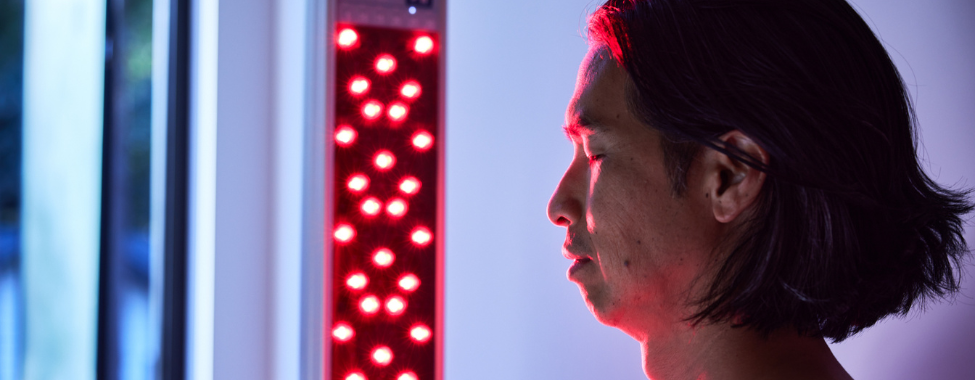
FAQ: Red Light Therapy in Dermatology
How does red light therapy work?
RLT uses specific wavelengths of visible red or near-infrared light to penetrate the skin. This light energy may stimulate mitochondrial activity in skin cells, enhancing ATP production, reducing oxidative stress, and promoting collagen synthesis and tissue repair.
Is red light therapy safe for all skin types?
Yes, RLT is generally well-tolerated across all Fitzpatrick skin types. It does not produce heat or cause DNA damage like UV light. However, treatment plans should be individualized based on skin condition, sensitivity, and concurrent therapies.
How many red light therapy sessions are typically needed?
Most protocols recommend 2–3 sessions per week over 8–12 weeks for initial improvement, followed by maintenance treatments as needed. The frequency and duration depend on the patient’s skin goals and the condition being addressed.
Can RLT replace other dermatologic treatments?
No. RLT is best used as a complementary therapy. It enhances the effects of existing dermatologic treatments such as topical retinoids, microneedling, or laser resurfacing, but is not a substitute for targeted pharmaceutical or procedural interventions.
Is red light therapy safe to use before a treatment?
Yes, when used properly, red light therapy may be safely applied prior to procedures to prime the skin by increasing circulation, oxygenation, and cellular activity. However, its use pre-procedure should be carefully timed and based on the type of treatment being performed. For ablative or aggressive interventions, RLT is typically introduced post-treatment to avoid overstimulation.
How long do the effects of RLT last?
The effects of RLT are cumulative and depend on consistent use. Short-term benefits such as reduced redness or inflammation may appear within hours to days, while structural improvements like collagen remodeling can take several weeks. Maintenance sessions are usually recommended to sustain results.
Is there an age limit for red light therapy?
There is no strict age limit. RLT can be used in both younger and older patients, provided there are no contraindications. In younger individuals, it’s often used for acne and skin inflammation. In older patients, it is commonly applied for photoaging, fine lines, and skin laxity. Pediatric use should be evaluated case-by-case and conducted under professional supervision.
What is the importance of wavelength and irradiance?
Wavelength and irradiance determine treatment efficacy. Wavelengths between 620–660 nm (red light) and 810–850 nm (near-infrared) are most studied for skin benefits. Irradiance determines the light’s intensity and influences treatment efficacy. Too low and the therapy is ineffective; too high and there’s a risk of overstimulation. Devices used in dermatology should be calibrated for both parameters to ensure therapeutic, safe exposure.
RLT: A Science-Backed Addition to Your Dermatology Toolkit
Red light therapy is more than a trend – it’s a versatile, well-researched modality that can enhance skin outcomes and elevate the patient experience. Dermatologists looking to expand their non-invasive offerings should consider the clinical benefits and business value of RLT. Whether it’s supporting recovery after procedures, treating inflammatory conditions, or offering anti-aging benefits, red light therapy is a low-barrier addition with high patient appeal.
By integrating red light therapy into your dermatology practice, you not only support better skin health but also signal your commitment to progressive, science-backed care.
 Canada
Canada Australia
Australia New Zealand
New Zealand Germany
Germany UK
UK EU
EU Ireland
Ireland Malaysia
Malaysia China
China Japan
Japan
